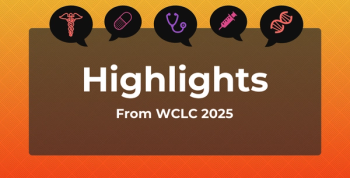
Intranasal Lidocaine May Be Effective Acute Migraine Treatment, Study Finds
Intranasal lidocaine may be a useful option for patients with an acute migraine, according to a study which showed the drug had a high success rate, low pain intensity, infrequent need for rescue medicine, and tolerable adverse events.
Intranasal lidocaine may be a useful option for patients with an acute
The
“Medications commonly used as an abortive treatment for acute migraine include nonsteroidal anti-inflammatory drugs (NSAID), antiemetics, triptan, and ergotamine. Even though these treatments are available, many patients continue to experience poor symptom control,” the authors said. “Intranasal lidocaine, a sodium channel blocker and local anesthetic, is considered effective in treating acute migraines by blocking the sphenopalatine ganglion. The sphenopalatine ganglion is a parasympathetic ganglion that lies behind a layer of mucosa in the posteromedial aspect of the nasal cavity and regulates cranial parasympathetic outflow through the release of neuropeptides.”
The study’s primary outcome was pain intensity while the secondary outcomes were success rate, the need for rescue medicine, and relapse occurrences, noted the researchers.
Based on the 6 studies that were eligible for the analysis, those who were administered intranasal lidocaine had a lower pain intensity at 5 minutes and 15 minutes. Additionally, they demonstrated a higher success rate and a less frequent need for rescue medicine than the control group. According to the research, these beneficial effects were not observed when an antiemetic was administered.
The researchers also found that intranasal lidocaine use did not have significant influence on the relapse rate, regardless of the use of antiemetics. In 1 report, the use of lidocaine resulted in local irritation in up to 49.4% of patients but did not cause major adverse events.
“In conclusion, the application of intranasal lidocaine can effectively reduce pain intensity, provide many patients with a decrease in the initial pain by 50% or more, and decrease the need for rescue medication without increasing the occurrence of relapse and tolerable adverse events,” the research said. “When patients have received antiemetics as a treatment for migraines, intranasal lidocaine did not provide an add-on effect.”
Reference
Chi P, Hsieh K, Chen K, et al. Intranasal lidocaine for acute migraine: A meta-analysis of randomized controlled trials [published online October 23, 2019]. PLOS One. doi: 10.1371/journal.pone.0224285.
Newsletter
Stay ahead of policy, cost, and value—subscribe to AJMC for expert insights at the intersection of clinical care and health economics.









































